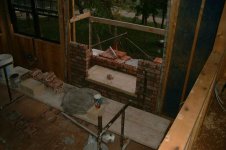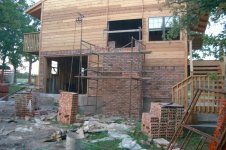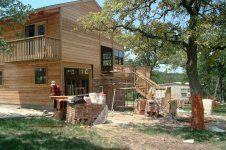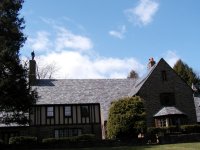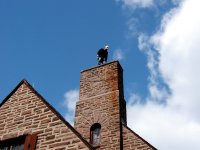jinman
Rest in Peace
- Joined
- Feb 23, 2001
- Messages
- 21,008
- Location
- Texas - Wise County - Sunset
- Tractor
- NHTC45D, NH LB75B, Ford Jubilee
JB and Randall, I had not thought of using the inside of the clay tiles to route a chimney. I guess I'm confused, because the SS pipe you are talking about would be mostly below the firebox, surrounded by the fireplaces filler brick. Once the pipe is inside the clay tile, there would be no need for it to run all the way to the top. It would just dump the exhaust gasses into the regular chimney. It only needs to extend into the smoke box above the current damper. Is that right? If the main fireplace is not in use, I'd just close the damper so no gas would backflow into the upper part of the house.
I may have enough room in the back part of the firebox to route a SS pipe that would accomplish this and not interfere with the normal fireplace. It would enter the basement wall below the raised hearth and into the fireplace base structure. Then it would turn upwards and into the back of the firebox. The middle of the base structure below the firebox is mainly just loose brick with little or no mortar. They are just stacked inside the fireplace wall. This should allow easy removal so the pipe and additional support can be installed. Only a small section of the current basement wall would be disturbed.
I may have enough room in the back part of the firebox to route a SS pipe that would accomplish this and not interfere with the normal fireplace. It would enter the basement wall below the raised hearth and into the fireplace base structure. Then it would turn upwards and into the back of the firebox. The middle of the base structure below the firebox is mainly just loose brick with little or no mortar. They are just stacked inside the fireplace wall. This should allow easy removal so the pipe and additional support can be installed. Only a small section of the current basement wall would be disturbed.
